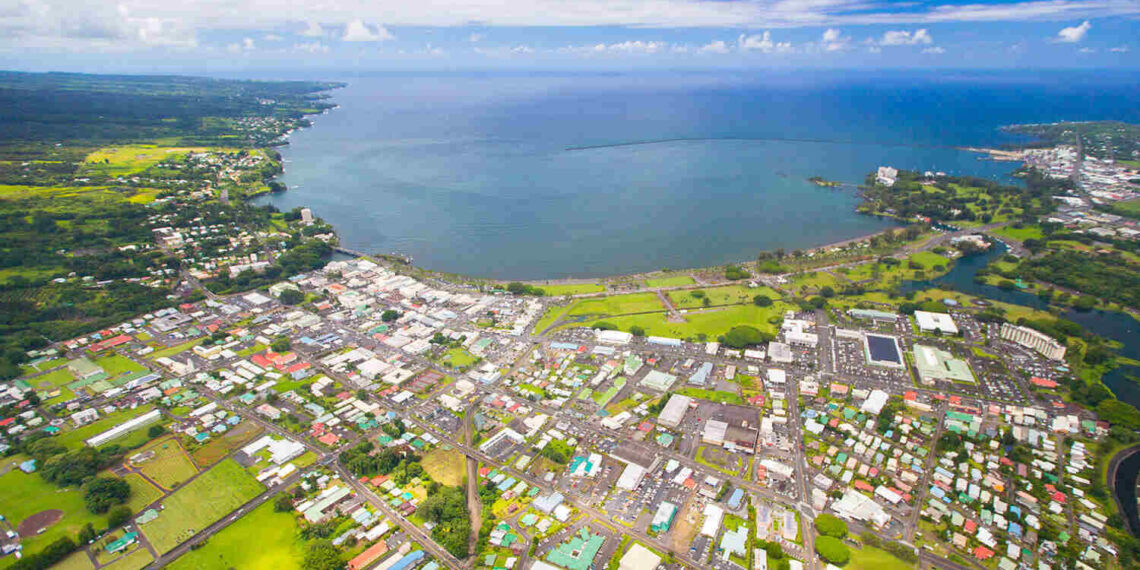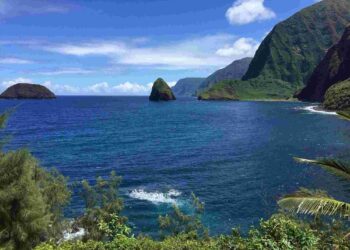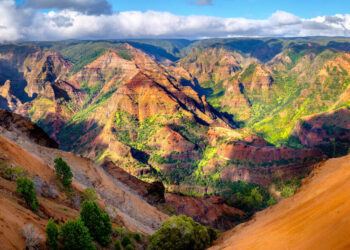Hilo, on the east side of Hawaii’s Big Island, is a vibrant town of about 45,000 people spread over 58 square miles. The surroundings consist of rainforests, volcanoes, and has got a calm, local vibe. Unlike the tourist prone west coast, Hilo feels real, with historic buildings, busy markets, and waterfalls right near downtown. This guide covers Hilo’s background, the best places to check out, and practical advice for your visit.
Hilo’s History
Hilo sits on land shaped by volcanoes. The Big Island formed millions of years ago from a hotspot pushing lava up through the Pacific ocean. Two giant volcanoes, Mauna Loa and Mauna Kea, loom nearby, their eruptions creating Hilo’s rich soil and jungles. The name “Hilo” might mean “to twist” in Hawaiian, maybe from the way rivers wind through the bay. Native Hawaiians lived here for centuries, fishing and growing taro. In the 1800s, Hilo became a sugarcane hub, bringing in workers from Japan, China, and Portugal and their cultures still show up in local food and festivals. In 1946 and 1960, Tsunamis hit the island hard, wiping out parts of the waterfront. That’s why you see big parks along the bay which now as buffers for the tsunamis. Today, Hilo’s a mix of history and new energy, with the University of Hawaii at Hilo and art galleries keeping it lively.
Places to Visit
Rainbow Falls
Ten minutes from downtown, Rainbow Falls is a must-see. The Wailuku River drops 80 feet into a pool surrounded by black lava rocks and green plants. On sunny mornings, rainbows appear in the mist. A short path leads to a lookout, and another trail goes to the top for a closer view. In Hawaiian stories, a goddess named Hina lived in a cave behind the falls. It’s a quick stop with a big impact.
Lili‘uokalani Gardens
Right on Hilo Bay, Lili‘uokalani Gardens is a 24-acre park built in 1917 for Hawaii’s last queen. It’s got a Japanese style, with koi ponds, stone lanterns, and red bridges. You can walk the paths, sit by the water, or look for Mauna Kea on clear days. It’s peaceful and shows off Hilo’s Japanese community. Sometimes they hold events like tea ceremonies here.
Hilo Farmers Market
Downtown, the Hilo Farmers Market runs every day, but Wednesdays and Saturdays are the busiest days. It covers a block with stalls selling mangoes, papayas, macadamia nuts, and crafts like wood carvings. Food trucks have local stuff like plate lunches or shave ice. You’ll hear music and see Hilo’s mix of Hawaiian, Asian, and other cultures. It’s a great spot to feel the town’s pulse.
‘Imiloa Astronomy Center
On the university campus, the ‘Imiloa Astronomy Center connects Hawaiian culture with science. It shows how ancient navigators used stars and how Mauna Kea’s telescopes study the sky. Exhibits cover volcanoes, stars, and Polynesian canoes. There’s a planetarium with shows about space and a garden with native plants. It’s good for kids or anyone curious about the universe.
Kaumana Caves
Four miles from downtown, Kaumana Caves is a lava tube from an 1881 Mauna Loa eruption. A staircase takes you into a dark and wet tunnel over a mile long with walls having stalactites, and tree roots hanging down. Bring a flashlight and good shoes—the floor’s rough. It’s a cool way to see the island’s volcanic side up close.
Wailuku River State Park
This park includes Rainbow Falls and another spot called Boiling Pots, a mile upstream. There, the river flows through pools linked by lava tubes, making the water look like it’s boiling. A short trail gives you a view of the pools and cliffs. It’s a fast visit but shows off the river’s power.
Coconut Island (Moku Ola)
A footbridge from Lili‘uokalani Gardens gets you to Coconut Island, a small park in Hilo Bay. Hawaiians called it Moku Ola, or “Island of Life,” because it was a place for healing. Now it’s good for picnics, swimming, or checking out tide pools. You can see downtown Hilo and Mauna Loa from here. It’s a relaxing spot to hang out.
Pana‘ewa Rainforest Zoo
Five miles south of Hilo, Pana‘ewa Rainforest Zoo is a free, 12-acre zoo in a jungle setting. It’s got a white Bengal tiger, monkeys, and Hawaiian birds like the nēnē goose. Paths wind through gardens with orchids and palms. On Saturdays, there’s a petting zoo for kids. It’s small but worth a stop for families or animal lovers.
Tips for Visiting Hilo
Hilo gets a lot of rain about 130 inches a year so mornings are the best for outdoor spots like Rainbow Falls or Kaumana Caves. Start around 8 AM to avoid showers. Roads are paved and easy, but fill up gas in downtown Hilo, and bring a map for places like Pana‘ewa Zoo.
Bring water, sunscreen, and a rain jacket. Temperature stay in the 70s to low 80s, but jungles feel cooler. If you’re visiting in spring, look for the Merrie Monarch Festival, a big hula event, but book hotels early as they are filled quickly in the spring. Stick to trails at sacred spots like Rainbow Falls, and don’t touch plants or animals.
Wrapping Up
Hilo is definitely a must go in the Island of Hawaii as it has got a little of everything from waterfalls and markets, to caves and history. Rainbow Falls and Lili‘uokalani Gardens show off its natural side, while the farmers market and ‘Imiloa Center dig into its culture and science. Kaumana Caves and Coconut Island let you feel the island’s raw and calm sides. With a map and a few hours, you can cover the highlights and get why Hilo’s special. Pack your bags and see it for yourself.











